Dongrui Wu
Wasserstein Distance based Deep Adversarial Transfer Learning for Intelligent Fault Diagnosis
Mar 02, 2019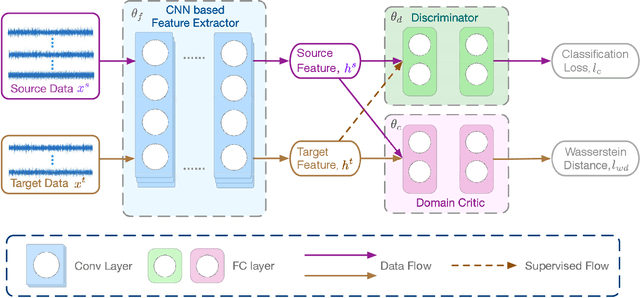
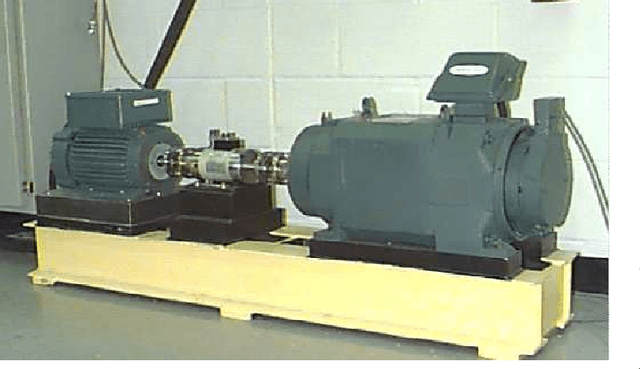

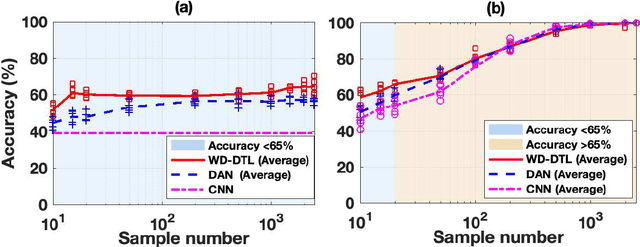
Abstract:The demand of artificial intelligent adoption for condition-based maintenance strategy is astonishingly increased over the past few years. Intelligent fault diagnosis is one critical topic of maintenance solution for mechanical systems. Deep learning models, such as convolutional neural networks (CNNs), have been successfully applied to fault diagnosis tasks for mechanical systems and achieved promising results. However, for diverse working conditions in the industry, deep learning suffers two difficulties: one is that the well-defined (source domain) and new (target domain) datasets are with different feature distributions; another one is the fact that insufficient or no labelled data in target domain significantly reduce the accuracy of fault diagnosis. As a novel idea, deep transfer learning (DTL) is created to perform learning in the target domain by leveraging information from the relevant source domain. Inspired by Wasserstein distance of optimal transport, in this paper, we propose a novel DTL approach to intelligent fault diagnosis, namely Wasserstein Distance based Deep Transfer Learning (WD-DTL), to learn domain feature representations (generated by a CNN based feature extractor) and to minimize the distributions between the source and target domains through adversarial training. The effectiveness of the proposed WD-DTL is verified through 3 transfer scenarios and 16 transfer fault diagnosis experiments of both unsupervised and supervised (with insufficient labelled data) learning. We also provide a comprehensive analysis of the network visualization of those transfer tasks.
Multi-Tasking Evolutionary Algorithm (MTEA) for Single-Objective Continuous Optimization
Dec 15, 2018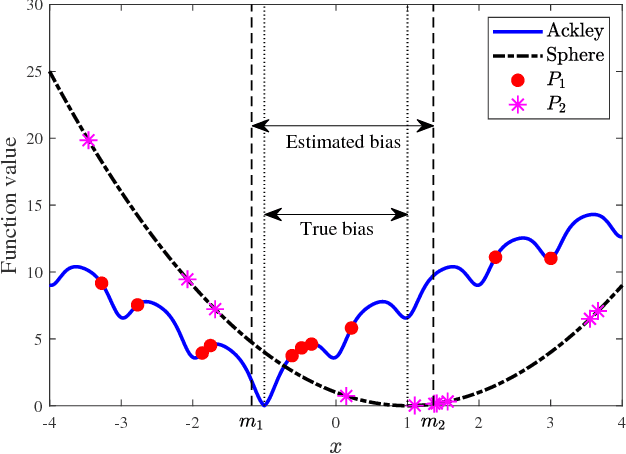
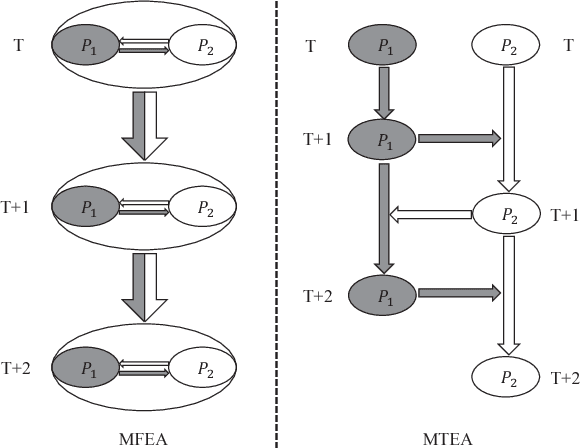
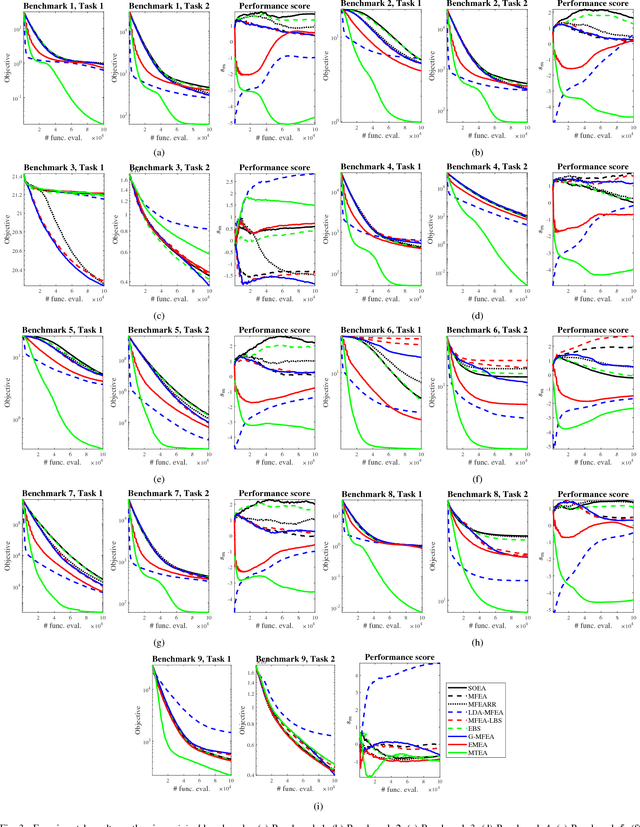
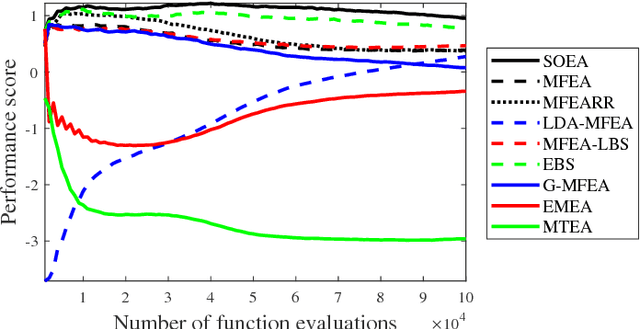
Abstract:Multi-task learning uses auxiliary data or knowledge from relevant tasks to facilitate the learning in a new task. Multi-task optimization applies multi-task learning to optimization to study how to effectively and efficiently tackle multiple optimization problems simultaneously. Evolutionary multi-tasking, or multi-factorial optimization, is an emerging subfield of multi-task optimization, which integrates evolutionary computation and multi-task learning. This paper proposes a novel easy-to-implement multi-tasking evolutionary algorithm (MTEA), which copes well with significantly different optimization tasks by estimating and using the bias among them. Comparative studies with eight state-of-the-art single- and multi-task approaches in the literature on nine benchmarks demonstrated that on average the MTEA outperformed all of them, and has lower computational cost than six of them. Particularly, unlike other multi-task algorithms, the performance of the MTEA is consistently good whether the tasks are similar or significantly different, making it ideal for real-world applications.
Transfer Learning for Brain-Computer Interfaces: An Euclidean Space Data Alignment Approach
Aug 08, 2018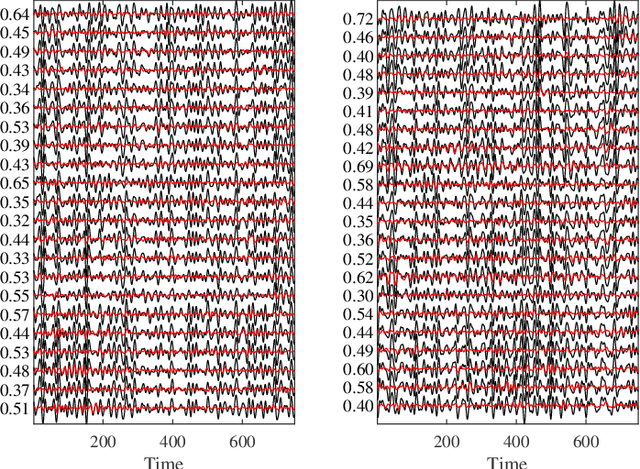
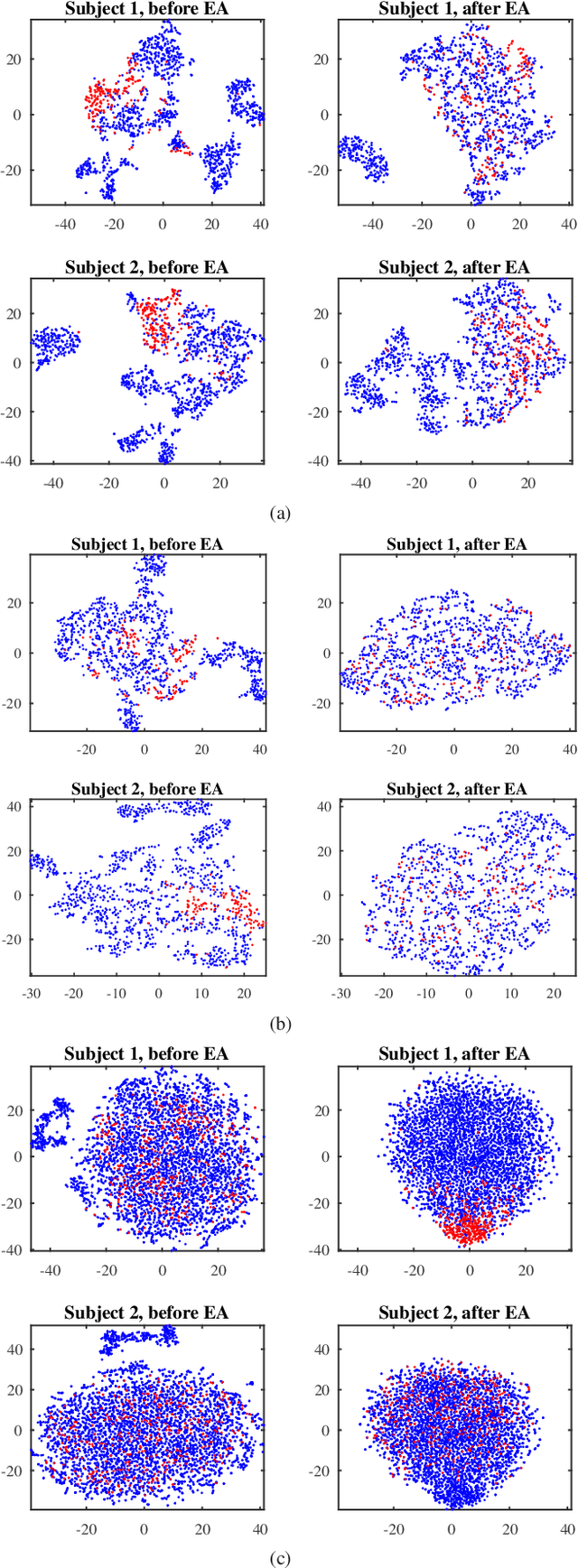
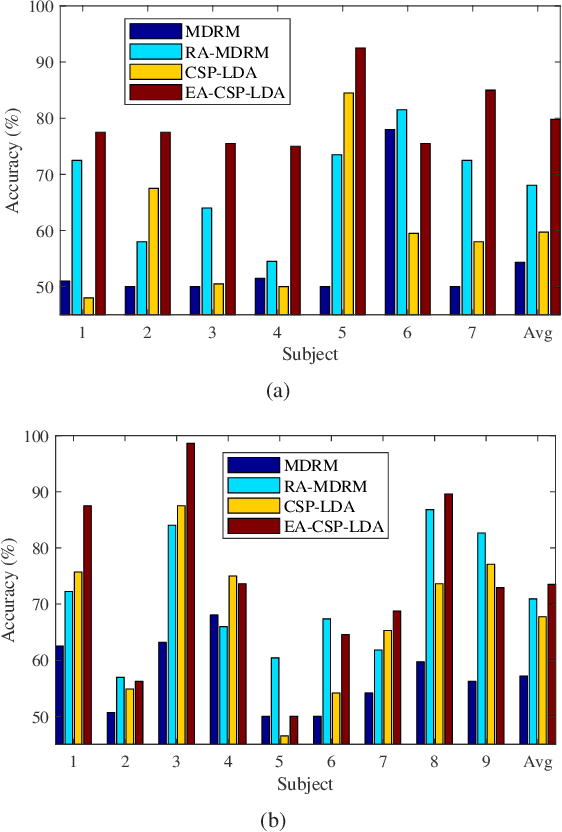
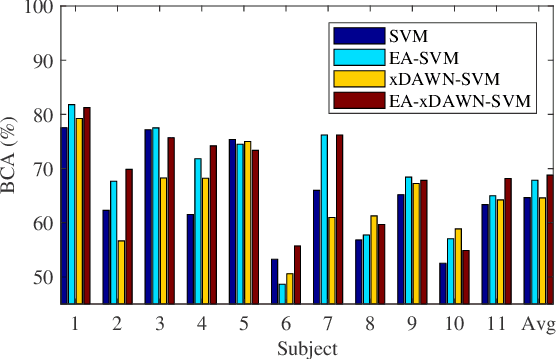
Abstract:Almost all EEG-based brain-computer interfaces (BCIs) need some labeled subject-specific data to calibrate a new subject, as neural responses are different across subjects to even the same stimulus. So, a major challenge in developing high-performance and user-friendly BCIs is to cope with such individual differences so that the calibration can be reduced or even completely eliminated. This paper focuses on the latter. More specifically, we consider an offline application scenario, in which we have unlabeled EEG trials from a new subject, and would like to accurately label them by leveraging auxiliary labeled EEG trials from other subjects in the same task. To accommodate the individual differences, we propose a novel unsupervised approach to align the EEG trials from different subjects in the Euclidean space to make them more consistent. It has three desirable properties: 1) the aligned trial lie in the Euclidean space, which can be used by any Euclidean space signal processing and machine learning approach; 2) it can be computed very efficiently; and, 3) it does not need any labeled trials from the new subject. Experiments on motor imagery and event-related potentials demonstrated the effectiveness and efficiency of our approach.
EEG-Based Driver Drowsiness Estimation Using Convolutional Neural Networks
Aug 08, 2018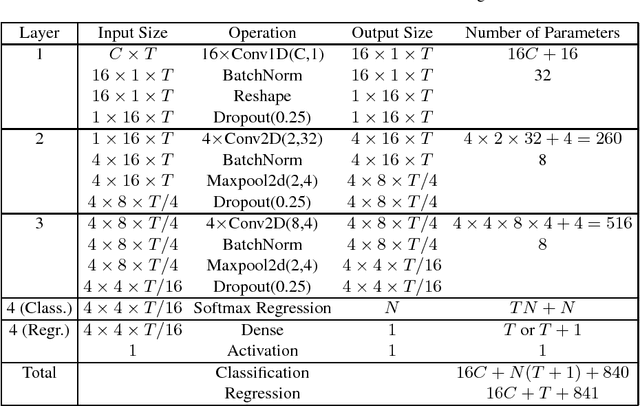
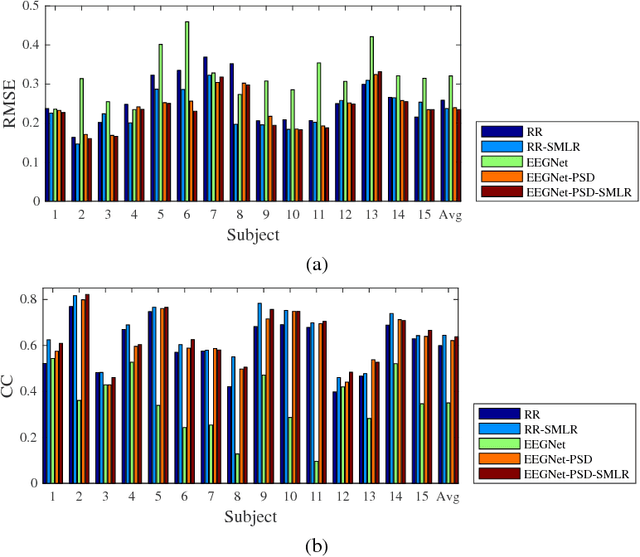
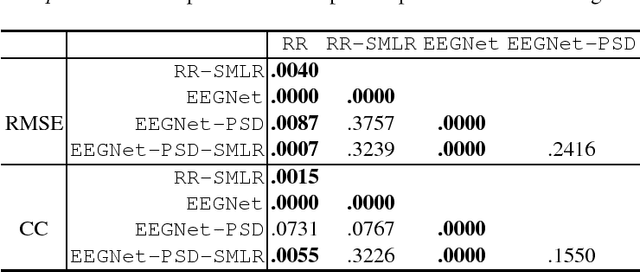
Abstract:Deep learning, including convolutional neural networks (CNNs), has started finding applications in brain-computer interfaces (BCIs). However, so far most such approaches focused on BCI classification problems. This paper extends EEGNet, a 3-layer CNN model for BCI classification, to BCI regression, and also utilizes a novel spectral meta-learner for regression (SMLR) approach to aggregate multiple EEGNets for improved performance. Our model uses the power spectral density (PSD) of EEG signals as the input. Compared with raw EEG inputs, the PSD inputs can reduce the computational cost significantly, yet achieve much better regression performance. Experiments on driver drowsiness estimation from EEG signals demonstrate the outstanding performance of our approach.
Transfer Learning Enhanced Common Spatial Pattern Filtering for Brain Computer Interfaces (BCIs): Overview and a New Approach
Aug 08, 2018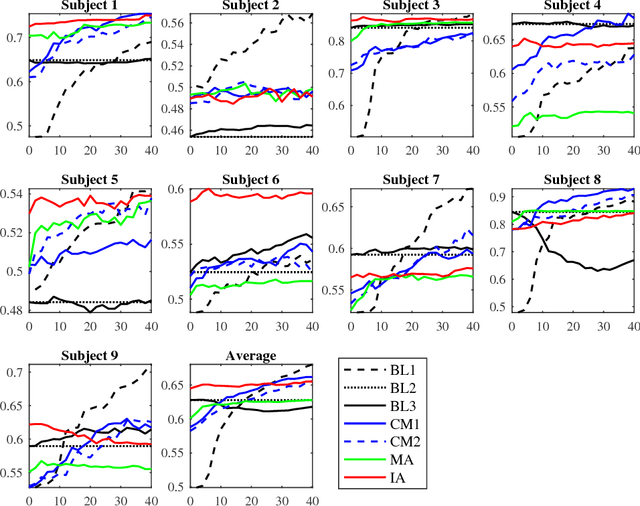
Abstract:The electroencephalogram (EEG) is the most widely used input for brain computer interfaces (BCIs), and common spatial pattern (CSP) is frequently used to spatially filter it to increase its signal-to-noise ratio. However, CSP is a supervised filter, which needs some subject-specific calibration data to design. This is time-consuming and not user-friendly. A promising approach for shortening or even completely eliminating this calibration session is transfer learning, which leverages relevant data or knowledge from other subjects or tasks. This paper reviews three existing approaches for incorporating transfer learning into CSP, and also proposes a new transfer learning enhanced CSP approach. Experiments on motor imagery classification demonstrate their effectiveness. Particularly, our proposed approach achieves the best performance when the number of target domain calibration samples is small.
Affect Estimation in 3D Space Using Multi-Task Active Learning for Regression
Aug 08, 2018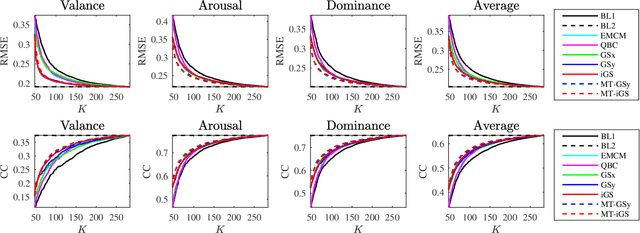
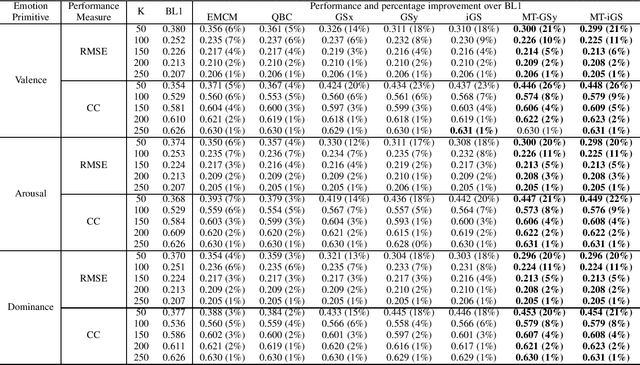
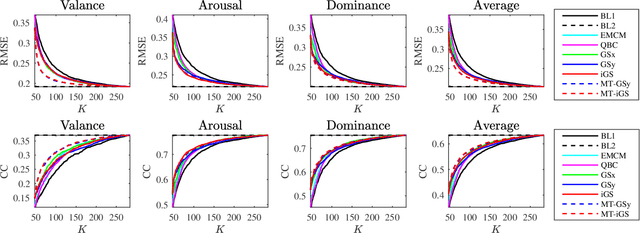
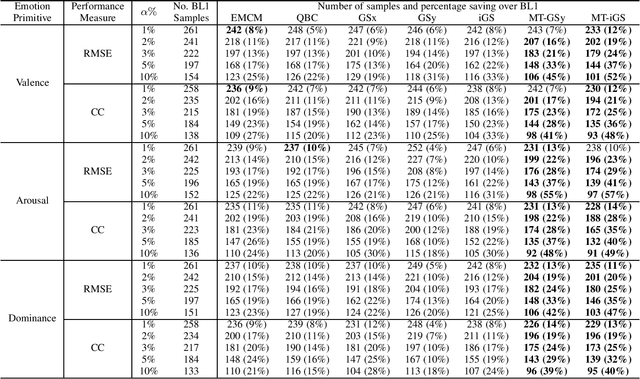
Abstract:Acquisition of labeled training samples for affective computing is usually costly and time-consuming, as affects are intrinsically subjective, subtle and uncertain, and hence multiple human assessors are needed to evaluate each affective sample. Particularly, for affect estimation in the 3D space of valence, arousal and dominance, each assessor has to perform the evaluations in three dimensions, which makes the labeling problem even more challenging. Many sophisticated machine learning approaches have been proposed to reduce the data labeling requirement in various other domains, but so far few have considered affective computing. This paper proposes two multi-task active learning for regression approaches, which select the most beneficial samples to label, by considering the three affect primitives simultaneously. Experimental results on the VAM corpus demonstrated that our optimal sample selection approaches can result in better estimation performance than random selection and several traditional single-task active learning approaches. Thus, they can help alleviate the data labeling problem in affective computing, i.e., better estimation performance can be obtained from fewer labeling queries.
Spatial Filtering for Brain Computer Interfaces: A Comparison between the Common Spatial Pattern and Its Variant
Aug 08, 2018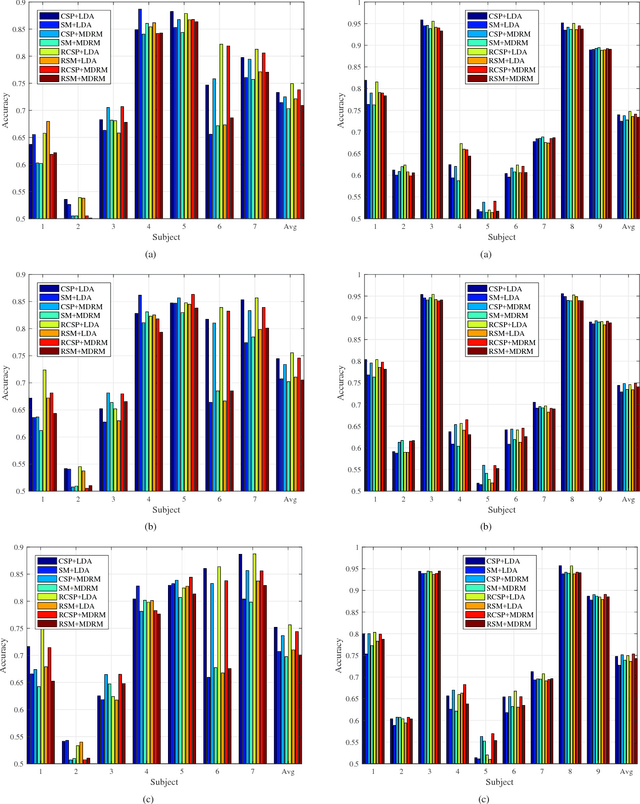
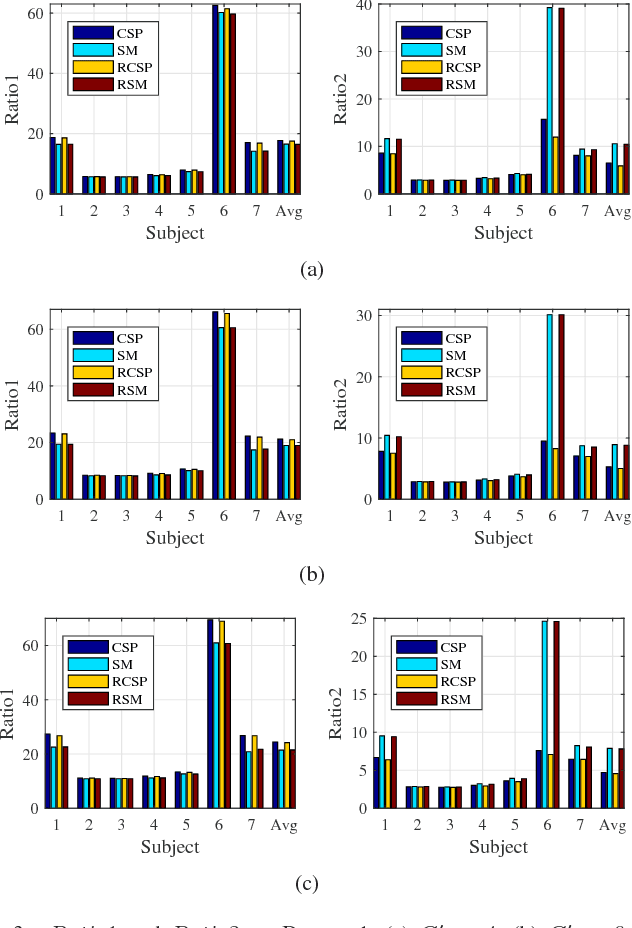
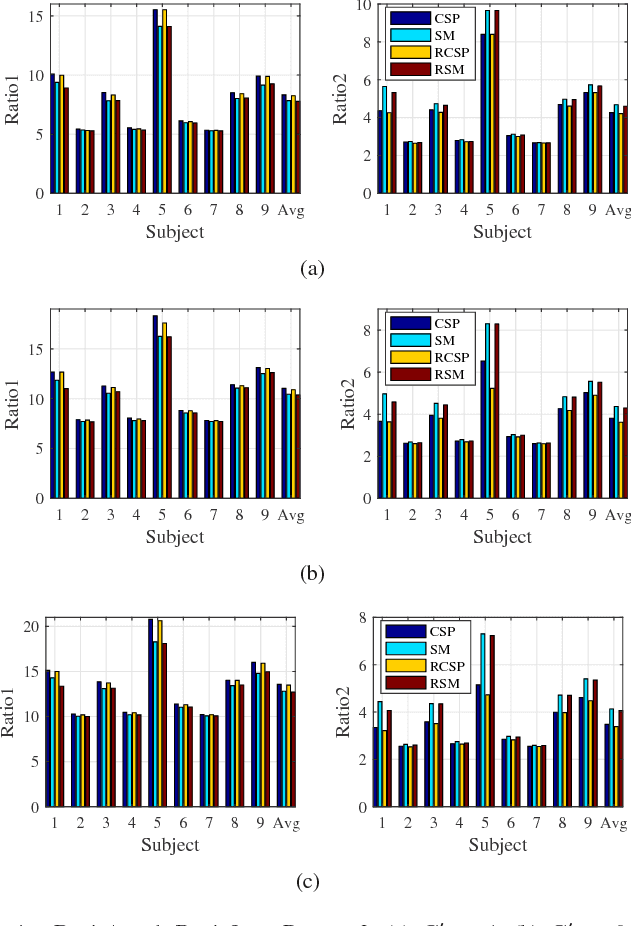
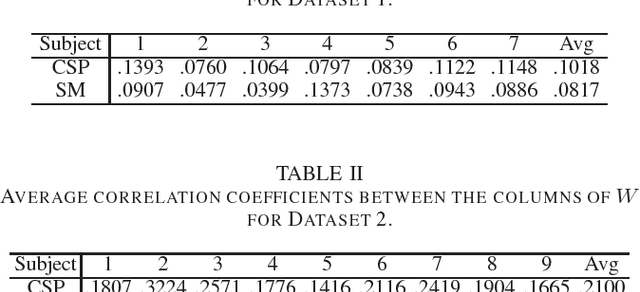
Abstract:The electroencephalogram (EEG) is the most popular form of input for brain computer interfaces (BCIs). However, it can be easily contaminated by various artifacts and noise, e.g., eye blink, muscle activities, powerline noise, etc. Therefore, the EEG signals are often filtered both spatially and temporally to increase the signal-to-noise ratio before they are fed into a machine learning algorithm for recognition. This paper considers spatial filtering, particularly, the common spatial pattern (CSP) filters for EEG classification. In binary classification, CSP seeks a set of filters to maximize the variance for one class while minimizing it for the other. We first introduce the traditional solution, and then a new solution based on a slightly different objective function. We performed comprehensive experiments on motor imagery to compare the two approaches, and found that generally the traditional CSP solution still gives better results. We also showed that adding regularization to the covariance matrices can improve the final classification performance, no matter which objective function is used.
Feature Dimensionality Reduction for Video Affect Classification: A Comparative Study
Aug 08, 2018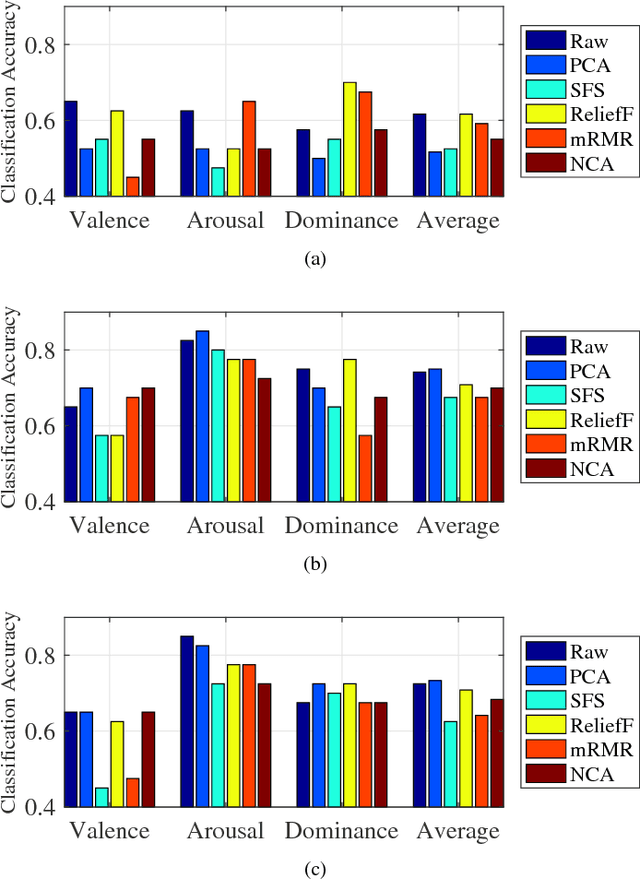

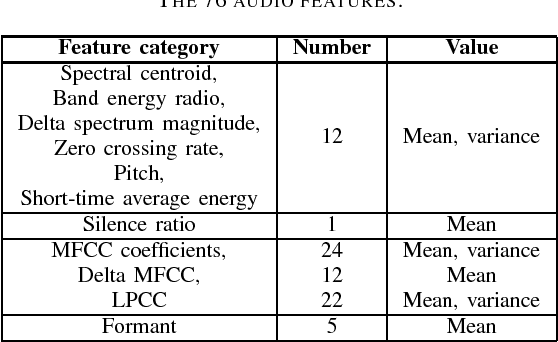
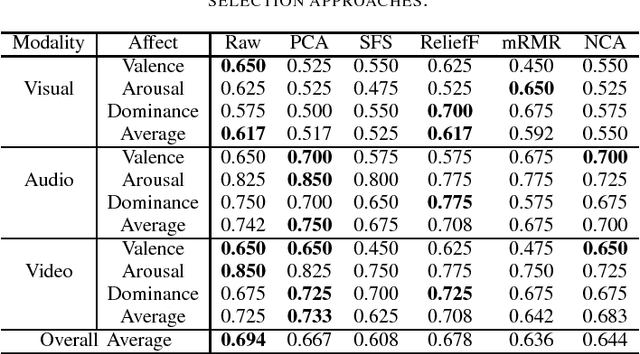
Abstract:Affective computing has become a very important research area in human-machine interaction. However, affects are subjective, subtle, and uncertain. So, it is very difficult to obtain a large number of labeled training samples, compared with the number of possible features we could extract. Thus, dimensionality reduction is critical in affective computing. This paper presents our preliminary study on dimensionality reduction for affect classification. Five popular dimensionality reduction approaches are introduced and compared. Experiments on the DEAP dataset showed that no approach can universally outperform others, and performing classification using the raw features directly may not always be a bad choice.
Active Learning for Regression Using Greedy Sampling
Aug 08, 2018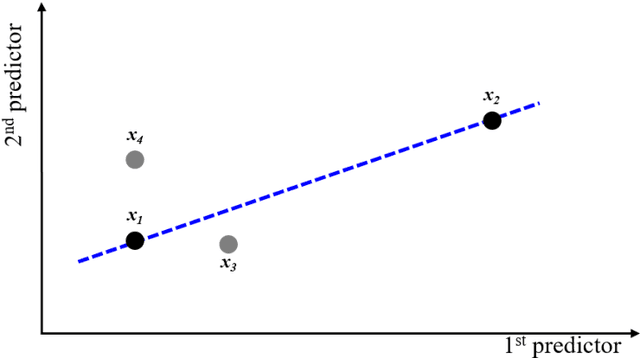
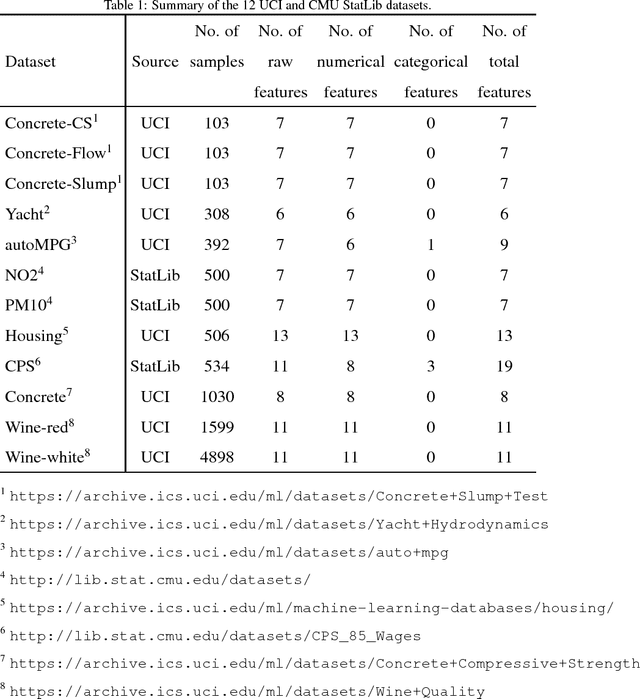
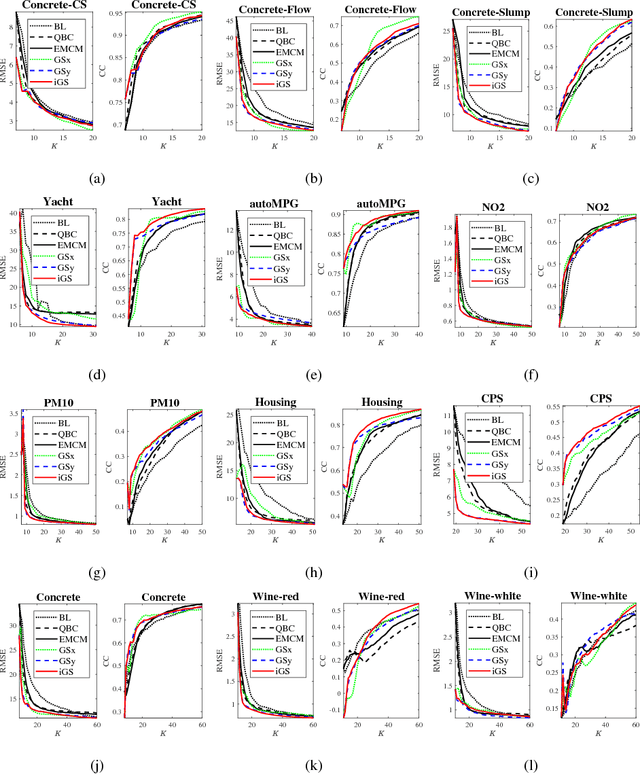
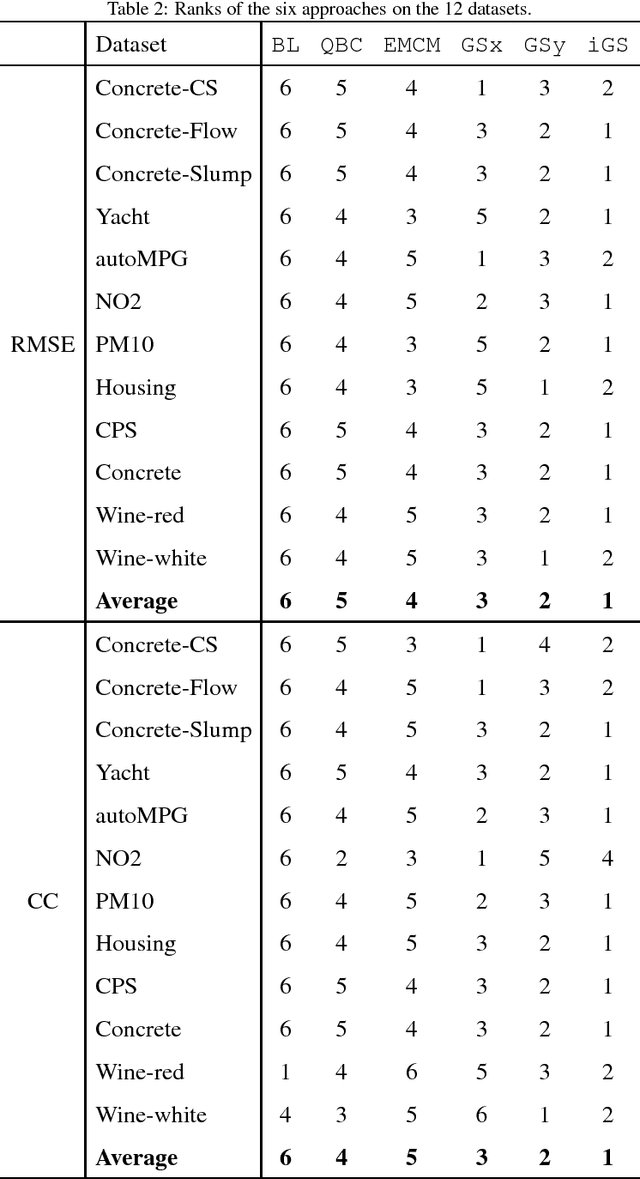
Abstract:Regression problems are pervasive in real-world applications. Generally a substantial amount of labeled samples are needed to build a regression model with good generalization ability. However, many times it is relatively easy to collect a large number of unlabeled samples, but time-consuming or expensive to label them. Active learning for regression (ALR) is a methodology to reduce the number of labeled samples, by selecting the most beneficial ones to label, instead of random selection. This paper proposes two new ALR approaches based on greedy sampling (GS). The first approach (GSy) selects new samples to increase the diversity in the output space, and the second (iGS) selects new samples to increase the diversity in both input and output spaces. Extensive experiments on 12 UCI and CMU StatLib datasets from various domains, and on 15 subjects on EEG-based driver drowsiness estimation, verified their effectiveness and robustness.
Multi-View Fuzzy Logic System with the Cooperation between Visible and Hidden Views
Jul 23, 2018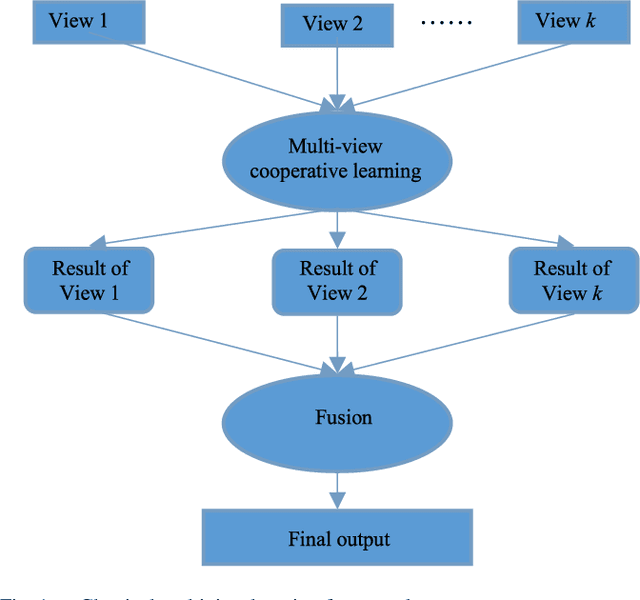
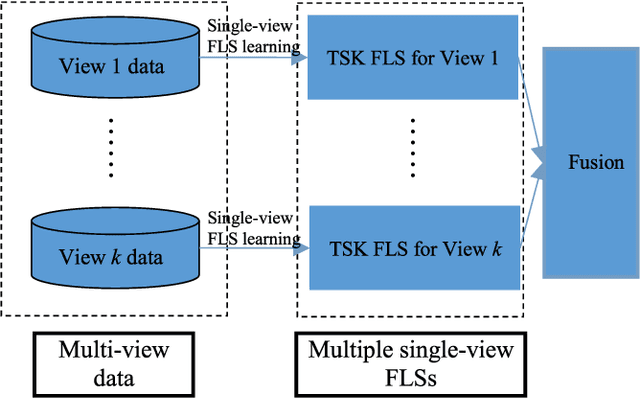
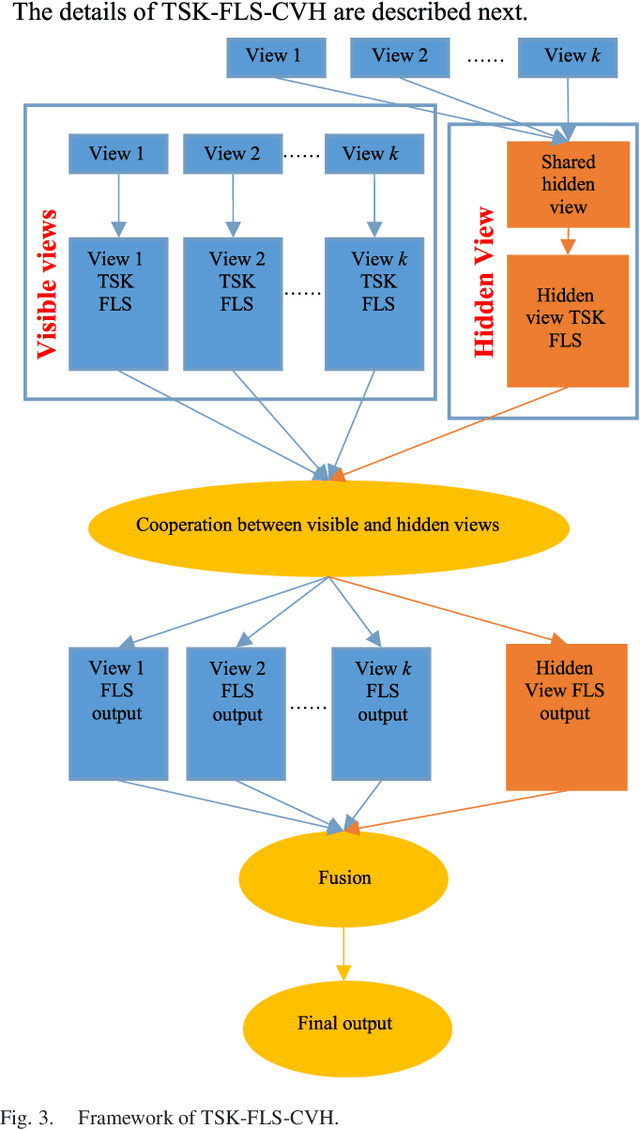
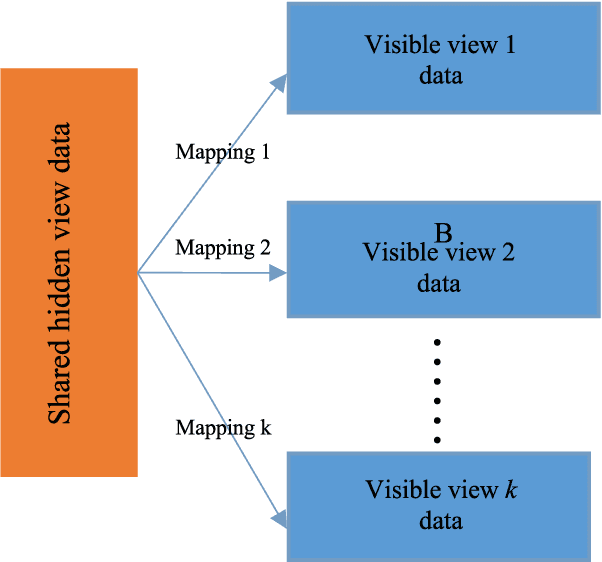
Abstract:Multi-view datasets are frequently encountered in learning tasks, such as web data mining and multimedia information analysis. Given a multi-view dataset, traditional learning algorithms usually decompose it into several single-view datasets, from each of which a single-view model is learned. In contrast, a multi-view learning algorithm can achieve better performance by cooperative learning on the multi-view data. However, existing multi-view approaches mainly focus on the views that are visible and ignore the hidden information behind the visible views, which usually contains some intrinsic information of the multi-view data, or vice versa. To address this problem, this paper proposes a multi-view fuzzy logic system, which utilizes both the hidden information shared by the multiple visible views and the information of each visible view. Extensive experiments were conducted to validate its effectiveness.
 Add to Chrome
Add to Chrome Add to Firefox
Add to Firefox Add to Edge
Add to Edge